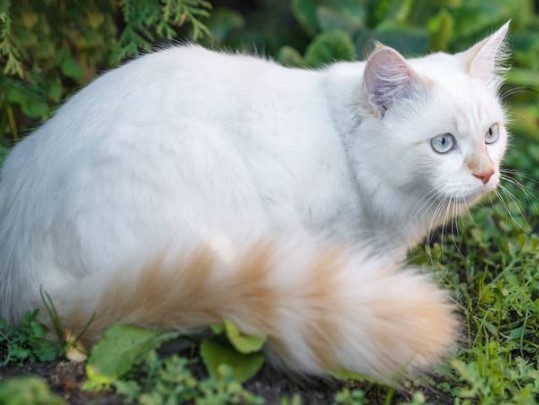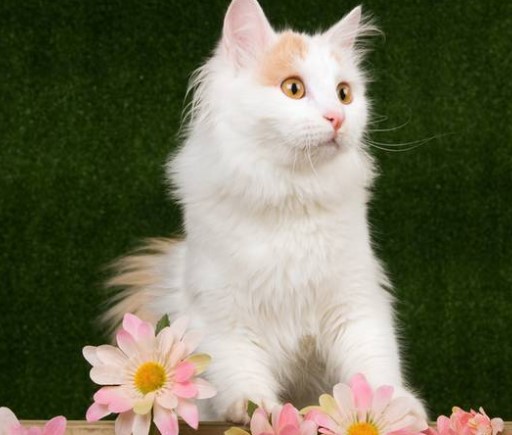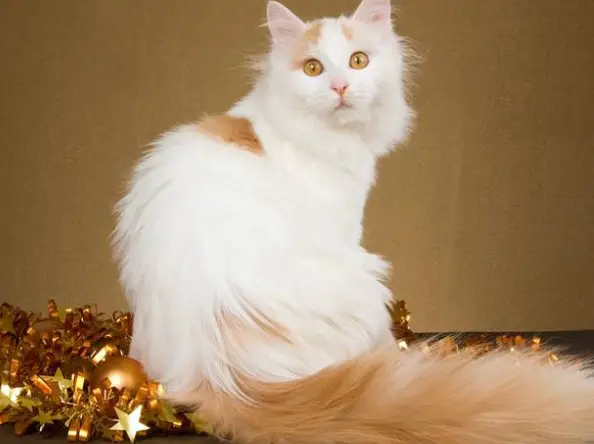Turkish Vans are quite large cats with an original appearance, soft hair, and a cheerful disposition. They love to play and swim, have no health problems, and, with proper care, are not dangerous for people with allergies.
Character
We will not compare the Turkish Vans with dogs, despite the fact that some people consider training to be a plus. Vans are smart, curious, energetic, active, mobile, love to play and walk (especially cats). They are very sociable, they know how to clearly and clearly express their desires. As a rule, in the circle of his family, the Turkish Van chooses his own “owner”, which he follows everywhere. Vans love to run and jump, they definitely need to equip a vertical space (shelves, high-raised couches, play complexes). These cats are not afraid of water, they love to play with a trickle from the tap and swim in the bath.
Appearance
Semi-long-haired cats with water-repellent coat without undercoat. To the touch, their wool reminds someone of a mink, someone like cashmere. The characteristic color is white with colored spots on the crown and a colored fluffy tail with dark “rings”. The characteristic color of the spots is red-chestnut (apricot). Eye color is amber.
The gene for the dominance of white in the Van allele is responsible for the characteristic color of the Turkish Van. It is believed that this gene suppresses the white color of the classic tabby color – striped red or gray.
The climate of the Armenian Highlands, with a long snowy winter, predetermined the peculiarities of the coat of the Van cats. By winter they are pubescent, and with the onset of spring they molt to the state of almost short-haired. Cats are larger and fluffier than cats, an adult cat can weigh up to 9 kg and reach 120 cm in length from the tip of the nose to the tip of the tail.
The nose and heels are pink.
Health
Vans are a natural breed, devoid of genetic problems and inherited diseases. They reach full maturity at the age of 3 – 5 years.
Recently, there has been a fashion for breeding completely white Vans with blue or multi-colored eyes. Such cats are unlikely to be Turkish Vans, as their color suggests a different genetic mechanism – the dominant allele Vans of the white suppression gene. This same genetic mechanism causes degeneration of the inner ear, which is why many white cats with blue or multi-colored eyes are born completely or partially deaf.
Care
The Vans coat, devoid of undercoat, does not require frequent combing. Only during the shedding period does the cat need help to get rid of old hair and comb it out every day.
Van’s love of bathing allows people with cat allergies not to experience serious problems in communicating with the breed. Regular bathing (once a month – one and a half) noticeably softens the allergic reaction.
Children and pets
The love of outdoor games makes the Vans the best friends of children and dogs. At the same time, in the company of dogs, Vans will try to dominate, and in the company of cats, the female Vans will dominate the males (even to be almost half of them).
